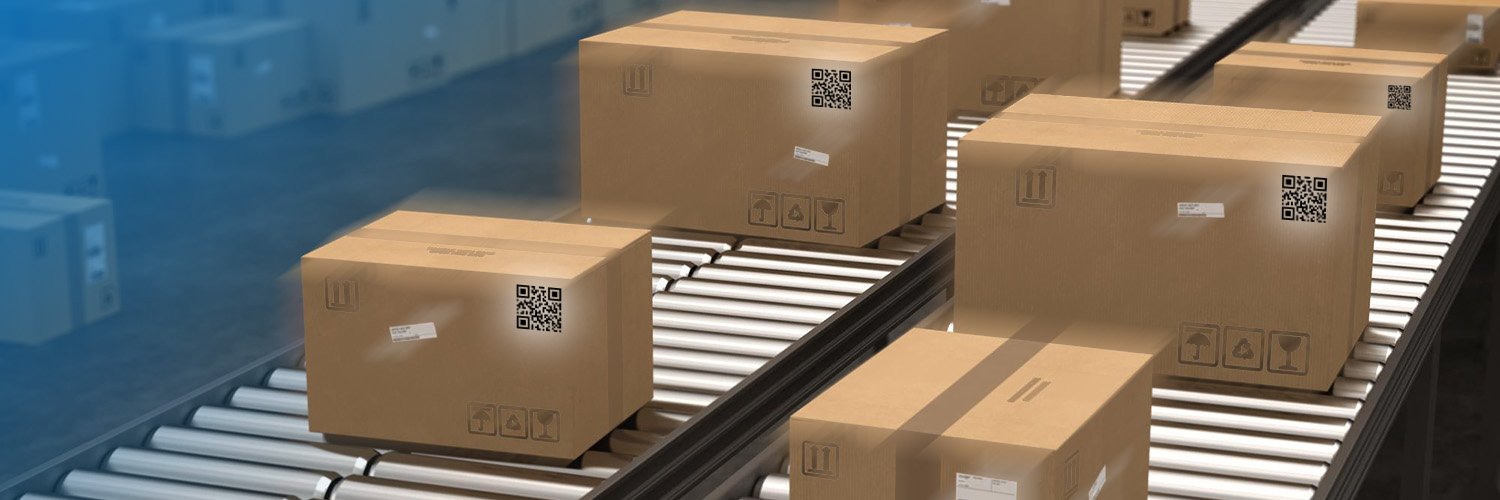From 1D to 2D barcodes: Strategic factors for a smooth transition
The age of the 2D barcode is here—and many companies are preparing for the shift from linear 1D barcodes to two-dimensional ones, enabling significantly more data to be encoded in a single symbol. But what are the most important factors to consider when making the transition? Learn more here!
The shift from 1D to 2D barcodes
The shift from 1D to 2D barcodes, also known as “Sunrise 2027,” is an initiative led by GS1. This coordinated effort primarily aims to encourage the retail industry to transition from 1D to 2D barcodes. By providing guidance and solutions to stakeholders, the Sunrise 2027 project ensures a clear standard for 2D barcodes and guarantees compatibility across all retail POS systems.
The move to 2D barcodes is a welcome change for the retail industry, as it enables more information to be encoded in a single barcode, thereby increasing efficiency and enhancing the user experience. Learn more about the benefits of 2D barcodes here. Combined with solutions such as GS1 Digital Link, this shift will deliver benefits throughout the supply chain—from manufacturers to end users.
However, the project is inherently complex, and there are several factors to consider when planning this transition. Below are some of the most important aspects to keep in mind when preparing for the move from 1D to 2D barcodes.
Factors to consider when planning the shift from 1D to 2D
Have hardware readiness in mind
One of the fundamental aspects of the shift from 1D to 2D barcodes is hardware readiness—retailers must ensure their equipment supports scanning and reading data from the chosen 2D barcode. This includes hardware such as:
POS systems
Scanners used for self-scanning
Self-checkout devices
The same applies to manufacturers, as they are responsible for adding labels and barcodes. Printing technology must be able to generate and print 2D barcodes that comply with the required standards to ensure easy readability.
Compile a strategy for backward compatibility
Since the shift from 1D to 2D barcodes will not happen overnight, it is vital to have a clear strategy for using both types in parallel. This strategy will affect the entire supply chain—for example, if a producer continues to use 1D barcodes while a retailer immediately switches to 2D, conflicts and inefficiencies may arise.
Provide a user-friendly experience
Solutions such as GS1 Digital Link allow consumers to scan a barcode and instantly access useful information, such as ingredient lists, potential allergens, or how-to-use guides. To be effective, the content delivered via GS1 Digital Link must be mobile-friendly, relevant, and kept up to date.
The same applies to business partners and collaborators, where consistency of data and security are critical focus areas.
Ensure a plan for governance of URIs
For GS1 Digital Link, there is the option to use id.gs1.org as a domain or resolver to manage URIs—but brand owners are also free to use their own resolver. If that is the case, it raises the question of how to set up the infrastructure needed to host and maintain the digital content. Furthermore, issues related to security and performance must be resolved before launch.
Stay compliant with regulatory requirements and market standards
When switching from 1D to 2D barcodes, it is essential to meet all legal requirements, as well as those specific to each market. Make sure no important data is lost during the transition, and stay up to date with the latest regulations and deadlines. Topics connected to this are:
What type of information that needs to be encoded in the barcode
When the switch from 1D to 2D barcodes is expected to occur
Specific regional mandates
Be mindful of changes in the supply chain
The switch to 2D barcodes may bring unforeseen changes in the supply chain, which are important to address and adapt to when necessary. For example, the following areas may require additional attention and action:
Adjustments to printing setups
New standards or procedures
Changes in package design
In addition, training staff on 2D barcodes is an effective way to ensure that everyone stays up to date with the new standards.
How to get assistance with the 1D to 2D barcode transition?
For many, the transition from 1D to 2D barcodes can seem confusing. Here are some ways retailers can get guidance during the shift:
General questions – For general information about 2D barcodes, including guidelines, step-by-step instructions, and best-practice examples, GS1 provides an extensive collection of resources.
Hardware – Many hardware providers are already adapting to the 2D barcode change. For example, Datalogic offers a wide range of 2D scanners to meet various application needs.
Self-scanning – Many self-scanning providers are preparing for the move to 2D barcodes. EasyShop is currently developing a version compatible with 2D scanning, ensuring the same simple and convenient shopping experience, along with the additional features enabled by 2D barcode technology.
About GS1
GS1 is a global collaboration where industry leaders, governments, regulators, and other stakeholders work together to create standards-based solutions aimed at addressing and solving the challenges of data exchange.





